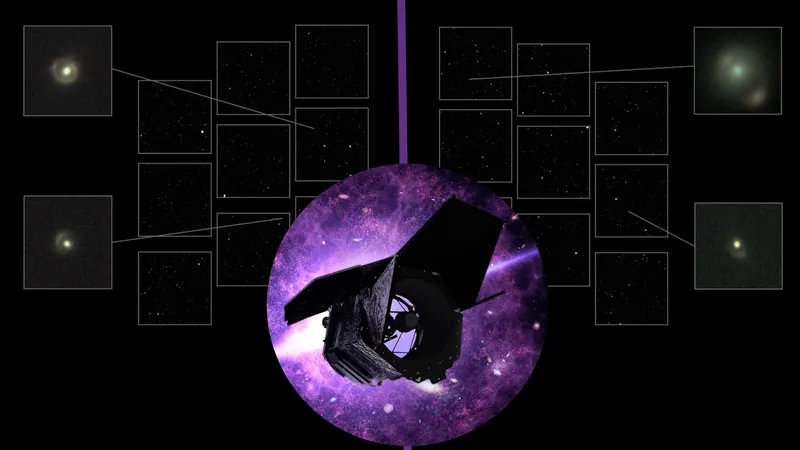
Unlocking the Mysteries of Dark Matter: How the Roman Space Telescope Will Use Einstein's Genius
2025-06-17
Author: Li
Revolutionizing Astronomy with Einstein's Theory
Get ready, space enthusiasts! In 2027, NASA's Nancy Grace Roman Space Telescope is set to embark on a groundbreaking mission that connects us to the genius of Einstein himself. By harnessing gravitational lensing—a phenomenon first predicted by Einstein in 1916—the telescope will dive deep into one of science's greatest enigmas: dark matter.
What is Gravitational Lensing?
Gravitational lensing occurs when massive objects, like galaxies, warp the fabric of space-time, creating a lensing effect that bends light from more distant sources. This natural distortion can lead to astonishing visual effects, often appearing as eerie shapes or multiple images of the same galaxy.
A Treasure Trove of Data Awaits
New research predicts that Roman will uncover about 160,000 gravitational lenses during its cosmic surveys. Among these, around 500 will provide optimal conditions for probing dark matter, the elusive substance that constitutes a staggering 85% of our universe.
The Dark Matter Dilemma
Despite its abundance, dark matter is notoriously mysterious. It doesn't interact with light, making it invisible and entirely outside the realm of everyday particles like electrons and protons. This absence of interaction has pushed scientists to explore beyond traditional particle physics for answers.
Curving Light, Finding Secrets
So how can something invisible influence light? The answer lies in gravity. General relativity tells us that any massive body can bend space-time, causing light to follow this curvature. Thus, even though dark matter itself doesn't emit light, it can still affect the paths of photons traveling through its gravitational field.
From Hubble to Roman: A Quantum Leap in Imaging
Unlike its predecessor, the Hubble Space Telescope, Roman will deliver images that are approximately 200 times larger and far sharper. This high-resolution capability not only increases the amount of data but also enhances the quality, allowing for the detection of smaller gravitational lenses that can reveal crucial details about dark matter.
Precision Measurement on a Cosmic Scale
Equipped with a 300-megapixel camera, Roman will perform precision measurements of the bending light from background galaxies, akin to measuring human hair from a distance greater than two and a half football fields. This sensitivity enables the identification of tiny dark matter structures, potentially shedding light on how galaxies formed in the early universe.
A Game of Tiny Odds, with Big Possibilities
The quest for dark matter isn't a simple one—it’s a challenge laden with tiny odds and vast unknowns. However, with Roman’s advanced capabilities, scientists anticipate a higher chance of uncovering the hidden cosmic truths. While the dark matter itself will remain invisible, its gravitational effects could lead to significant breakthroughs in our understanding.
The Future of Cosmic Exploration Awaits
As Roman gears up for its mission, researchers eagerly await the opportunities it will present. With every gravitational lens captured, we get closer to unmasking the particle nature of dark matter, changing our understanding of the universe forever. Stay tuned, the cosmos is about to get a whole lot more interesting!


 Brasil (PT)
Brasil (PT)
 Canada (EN)
Canada (EN)
 Chile (ES)
Chile (ES)
 Česko (CS)
Česko (CS)
 대한민국 (KO)
대한민국 (KO)
 España (ES)
España (ES)
 France (FR)
France (FR)
 Hong Kong (EN)
Hong Kong (EN)
 Italia (IT)
Italia (IT)
 日本 (JA)
日本 (JA)
 Magyarország (HU)
Magyarország (HU)
 Norge (NO)
Norge (NO)
 Polska (PL)
Polska (PL)
 Schweiz (DE)
Schweiz (DE)
 Singapore (EN)
Singapore (EN)
 Sverige (SV)
Sverige (SV)
 Suomi (FI)
Suomi (FI)
 Türkiye (TR)
Türkiye (TR)
 الإمارات العربية المتحدة (AR)
الإمارات العربية المتحدة (AR)